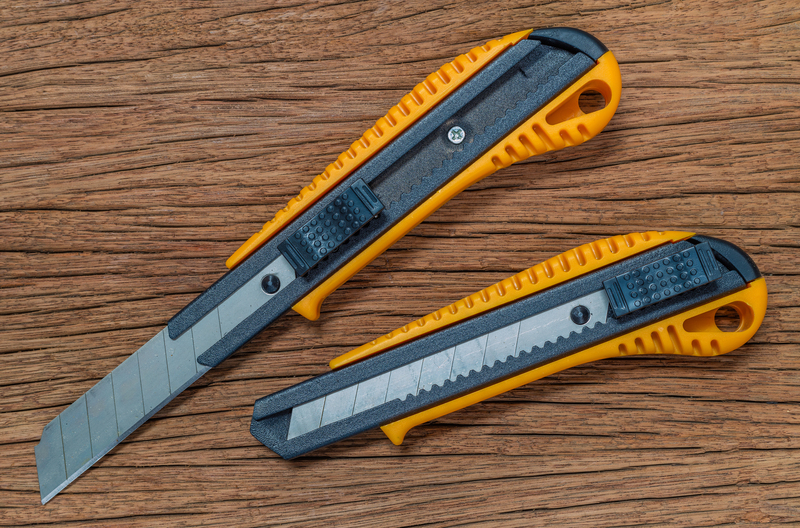Masterful planning for a successful bed and mattress move
Posted on 29/05/2025
Masterful Planning for a Successful Bed and Mattress Move: Comprehensive Guide
Moving to a new home can be both exciting and exhausting, particularly when it comes to relocating large, bulky items like beds and mattresses. A successful bed and mattress move requires strategic planning, attention to detail, and the right materials. Whether you're handling the process alone or with professional movers, understanding the best steps to take will ensure your valuable furniture arrives in pristine condition.

Why Careful Planning is Essential for Bed and Mattress Moves
Your bed and mattress are not only significant investments but are also essential for your comfort and health. Poor handling during a move can lead to damage, stains, or loss of structural integrity. By masterfully planning every aspect of your move, you safeguard your sleep quality and maximize the lifespan of your bedding.
- Prevents wear, tears, and stains
- Avoids bed frame scratches and broken parts
- Guarantees hygiene by keeping mattresses clean
- Simplifies reassembly in your new home
1. Assessing Your Bed and Mattress Before the Move
Begin with a thorough assessment of your bed frame and mattress. Determine the size, condition, and whether disassembly is possible or required. For instance, king-size and queen-size beds often need to be taken apart, while single beds may fit through doorways as is. Take this opportunity to inspect for any pre-existing damages and take photos for reference.
- Check compatibility: Will your bed and mattress fit in your new space?
- Take measurements: Measure doorways, hallways, and staircases at both locations.
- Identify assembly points: Take note of screws, clips, and connectors for easy assembly later on.
2. Gathering the Right Moving Supplies
The key to a successful mattress and bed frame move is having the correct moving materials. These items not only protect your furniture but also make the process faster and safer.
- Mattress bags: Essential for protecting mattresses from dirt, moisture, and bugs.
- Bubble wrap or moving blankets: Wrap bed frames and headboards to avoid scratches.
- Heavy-duty tape: For securing mattress bags and wrapping items together.
- Plastic or zip ties: To organize bed slats or loose screws.
- Marker and labels: For easy reassembly at your new home.
3. Disassembling the Bed Frame Step by Step
A successful bed and mattress move often involves disassembly. This not only makes the frame lighter and less cumbersome, but also prevents structural damage. Here's how to do it effectively:
- Clear the Bed: Remove bedding, pillows, and the mattress. Wash and pack linens separately for freshness.
- Detach the Mattress: Move it to a clean, dry spot. Immediately cover it with a mattress bag to prevent stains and dust.
- Disassemble Frame Components: Using the manufacturer's instructions, take apart the headboard, footboard, side rails, and slats.
- Organize Hardware: Place screws, bolts, and nuts in a zippered bag. Label it and tape it to the headboard or pack it in your essentials box for easy access.
- Protect Parts: Wrap components with bubble wrap or moving blankets. Secure fragile sections (like upholstered headboards) with extra padding.
4. How to Pack, Protect, and Move a Mattress Safely
Your mattress needs proper care during relocation. An optimized mattress move can help prevent sagging, mold, and structural problems.
- Use a Mattress Bag: High-quality plastic mattress bags are available in all sizes and guard against dirt, spills, and bed bugs.
- Cushion with Blankets: For extra protection during loading, wrap with an additional blanket, especially for long-distance moves.
- Transport Upright: Position your mattress sideways to save space and prevent pressure marks.
- Avoid Bending: Most spring mattresses cannot be bent without damage. For memory foam or latex, limited flex may be possible, but check manufacturer guidance.
- Label Clearly: Mark which room the mattress will go in or if it's part of a specific bed set.
5. Transporting the Bed Frame and Mattress: Tips and Techniques
The journey between homes can be the riskiest part for your bed and mattress. Follow these strategies to achieve a damage-free and efficient bed move:
- Load Large Components First: Place the headboard, rails, and slats along the side walls of the moving truck for stability.
- Secure the Mattress: Mattresses should be transported on their side, with nothing squeezing or bending them. Strap them in place with moving straps.
- Prevent Shifting: Use sturdy boxes or packed items to block movement. Never place heavy objects on the mattress or soft frames.
- Team Lifting: Always move beds and mattresses with at least two people to reduce the risk of injury and damage.
6. Moving Beds and Mattresses in Apartments and Complex Spaces
Apartment moves often introduce added challenges, from narrow staircases to tight elevator dimensions. Here's how to master these complexities:
- Check Moving Rules: Some buildings have restrictions on moving times or require advance reservations for elevators.
- Measure Entryways: Take precise measurements to ensure your bed components and mattress will fit before the move begins.
- Use Shoulder Straps: For bigger items, moving straps or a shoulder dolly can help navigate stairwells and tight corners.
- Protect Common Spaces: Lay out protective floor coverings to avoid fines or damage claims.
7. DIY vs. Professional Movers: Choosing the Right Approach
Should you move your bed and mattress on your own, or is it better to hire professionals? Each approach has pros and cons.
- DIY Advantages:
- Lower cost
- Control over timing and packaging
- Option to clean and inspect each item during disassembly
- DIY Disadvantages:
- Physical labor and risk of injury
- Potential for accidental damage
- Limited access to professional packing supplies and expertise
- Professional Movers' Advantages:
- Expertise in delicate furniture handling
- Provision of all packing materials
- Insurance coverage in case of damage
- Efficient loading and transit practices
- Professional Movers' Disadvantages:
- Higher cost
- Scheduling constraints and less flexible timing
Expert Tips for Masterful Bed and Mattress Relocation
- Clean Before Packing: Vacuum and spot-clean your mattress and bedframe before covering them to prevent trapped odors or dirt.
- Document Assembly: Take photos during disassembly for reference to simplify reassembly at your new place.
- Keep Instruction Manuals: Store any assembly paperwork or manufacturer guides with your hardware bag.
- Plan the Pathway: Clear all hallways and doorways and remove any hazardous obstacles ahead of time.
- Consider Upgrading: If your bed or mattress is due for replacement, moving is the ideal time to buy new - check for delivery to your new address.
- Allow Mattress to Breathe: Once in your new home, take the mattress out of its bag and let it air out before putting sheets on, ensuring freshness.
Special Considerations for Specialty Beds and Mattresses
Not all beds and mattresses are the same. Adjustable frames, waterbeds, airbeds, and memory foam each require tailored care. Here's how to manage a specialized bed and mattress move:
- Waterbeds: Drain all water fully and follow specific manufacturer's instructions for disassembly and transport.
- Adjustable Bases: Detach electronic components, bag and organize all handset controllers, and avoid kinking wires.
- Foam Mattresses: Never fold thicker memory foam mattresses, as this causes permanent creasing or damage.
- Antique or Canopy Beds: Wrap ornate woodwork meticulously. Take photographs for reference and pack finials separately.

Frequently Asked Questions about Bed and Mattress Moves
How do I know if my mattress will fit through doors or staircases?
Measure both your mattress and the narrowest points along your pathway. Queen and king mattresses are usually 80 inches long, sometimes requiring removal of doors from hinges or creative angling. If in doubt, consult a professional mover experienced in bed and mattress relocations.
What's the best way to clean a mattress before a move?
Vacuum both sides, spot-clean with a mild detergent, and allow it to dry completely before packing in a mattress bag. This ensures no lingering odors or mildew develop during transit.
Is it okay to transport a mattress on top of a car?
While sometimes done in emergencies, it's not recommended for long distances or larger mattresses, as wind stress causes damage and poses a hazard. Proper moving trucks or vans ensure a safe and successful mattress transportation.
How soon can I use my bed and mattress after moving?
Let your mattress breathe outside the packaging for at least an hour or two. For memory foam, allowing up to 24 hours is ideal to regain full shape and air out any packaging odors.
Conclusion: Mastering Your Bed and Mattress Move
A masterful bed and mattress move is all about preparation and smart execution. Start by evaluating your furniture, securing the right supplies, and following step-by-step disassembly and packing techniques. Consider your moving environment and choose between DIY or professional services based on your needs and resources.
With these comprehensive tips and strategies for a flawless bed and mattress relocation, you'll enjoy a seamless transition and restful nights in your new home. Happy moving!









